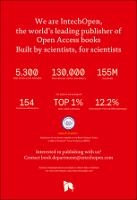Chapter Quality of Information within Internet of Things Data
Author(s)
Tomás, Alcañiz
Aurora, González-Vidal
P. Ramallo, Alfonso
F. Skarmeta, Antonio
Language
EnglishAbstract
Due to the increasing number of IoT devices, the amount of data gathered nowadays is rather large and continuously growing. The availability of new sensors presented in IoT devices and open data platforms provides new possibilities for innovative applications and use-cases. However, the dependence on data for the provision of services creates the necessity of assuring the quality of data to ensure the viability of the services. In order to support the evaluation of the valuable information, this chapter shows the development of a series of metrics that have been defined as indicators of the quality of data in a quantifiable, fast, reliable, and human-understandable way. The metrics are based on sound statistical indicators. Statistical analysis, machine learning algorithms, and contextual information are some of the methods to create quality indicators. The developed framework is also suitable for deciding between different datasets that hold similar information, since until now with no way of rapidly discovering which one is best in terms of quality had been developed. These metrics have been applied to real scenarios which have been smart parking and environmental sensing for smart buildings, and in both cases, the methods have been representative for the quality of the data.
Keywords
IoT, QoI, outliers, interpolation, data quality, data integrityDOI
10.5772/intechopen.95844Publisher
InTechOpenPublisher website
https://www.intechopen.com/Publication date and place
2021Classification
Computing and Information Technology


 Download
Download